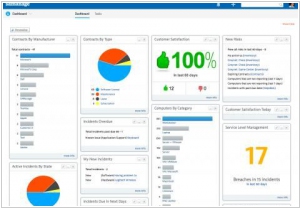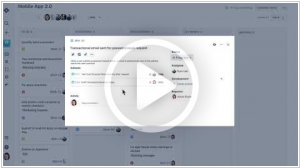JIRA vs Samanage
June 04, 2023 | Author: Michael Stromann
73
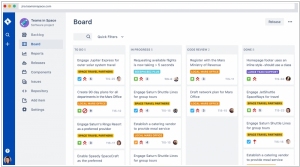
JIRA provides issue tracking and project tracking for software development teams to improve code quality and the speed of development. Combining a clean, fast interface for capturing and organising issues with customisable workflows, OpenSocial dashboards and a pluggable integration framework, JIRA is the perfect fit at the centre of your development team.
JIRA and Samanage are both popular software solutions used for managing and tracking various aspects of work and projects, but they have different focuses and functionalities.
JIRA, developed by Atlassian, is primarily known as a powerful issue and project tracking tool used in software development and agile project management. It offers features like issue tracking, task management, project planning, and collaboration. JIRA's flexibility and extensive customization options make it suitable for development teams to manage their work and track progress effectively.
Samanage, on the other hand, is an IT service management (ITSM) and asset management platform that focuses on streamlining IT operations and providing efficient support to users. It offers features like incident management, change management, service catalog, and asset tracking. Samanage aims to improve IT service delivery, automate processes, and enhance the overall IT service experience.
See also: Top 10 IT Service Desk software
JIRA, developed by Atlassian, is primarily known as a powerful issue and project tracking tool used in software development and agile project management. It offers features like issue tracking, task management, project planning, and collaboration. JIRA's flexibility and extensive customization options make it suitable for development teams to manage their work and track progress effectively.
Samanage, on the other hand, is an IT service management (ITSM) and asset management platform that focuses on streamlining IT operations and providing efficient support to users. It offers features like incident management, change management, service catalog, and asset tracking. Samanage aims to improve IT service delivery, automate processes, and enhance the overall IT service experience.
See also: Top 10 IT Service Desk software
JIRA vs Samanage in our news:
2023. Atlassian brings an AI assistant to Jira and Confluence
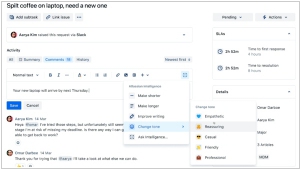
Atlassian has introduced Atlassian Intelligence, an AI-powered 'virtual teammate' that utilizes the company's proprietary models and OpenAI's large language models to create customized teamwork graphs. This technology enables various functionalities, such as AI-generated summaries in Confluence and test plans in Jira Software, as well as the rewriting of responses to customers in Jira Service Management. Atlassian Intelligence provides users with a chatbox similar to Chat-GPT, which is deeply integrated into different products and allows for the referencing of specific documents. For instance, to generate a summary of action items from a recent meeting, users can link the document with the transcript and request the summary inside Confluence. The tool then generates a list of decisions and action items from the meeting.
2022. Atlassian acquires Percept.AI
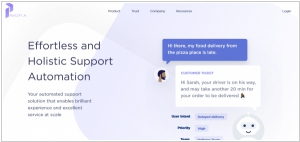
Atlassian has recently completed the acquisition of Percept.AI, an artificial intelligence (AI) company known for its automated virtual agent support solution—a chatbot that utilizes a proprietary AI engine for natural language understanding. The intention behind this acquisition is to integrate the advanced virtual agent technology into Jira Service Management, Atlassian's IT service management tool aimed at improving service delivery for both employees and customers. Percept.AI's platform, driven by data-driven proprietary technology, possesses the remarkable capability to continuously learn from customer interactions, while ensuring that every member of your team maintains full control over the AI agent's behavior and voice. This strategic move by Atlassian aims to enhance their service management offerings by leveraging AI-powered virtual agent capabilities.
2021. Atlassian launches Jira Work Management for every team
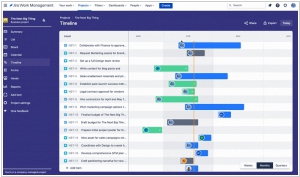
Atlassian has made an announcement regarding the introduction of a new edition of its project management tool, Jira, called Jira Work Management. The company has been actively expanding Jira's reach beyond its origins in software development teams. While Jira Service Management has successfully catered to IT teams, Jira Core has also made progress in this direction. However, Jira Work Management takes this a step further and is positioned to replace Jira Core. The objective behind Jira Work Management is to provide a version of Jira that empowers teams in various domains such as marketing, HR, finance, design, and more to efficiently manage their work. Moreover, if required, these teams can seamlessly connect their work with that of a company's development teams.
2020. Atlassian acquires asset management company Mindville

Atlassian has made an announcement regarding its recent acquisition of Mindville, an enterprise asset management provider focused on Jira. This acquisition marks Atlassian's entry into a new market segment, as it adds asset management tools to its existing suite of services. Mindville Insights, the flagship product of Mindville, enables tracking of assets across various departments such as IT, HR, sales, legal, and facilities within a company. While the platform is asset-agnostic, it is expected that many companies within Atlassian's user base will utilize it primarily for tracking IT assets such as servers and laptops. In addition to physical assets, the service also supports automatic importing of cloud-based servers from providers like AWS, Azure, and GCP. The Mindville team has developed connectors to integrate with popular services like ServiceNow and Snow Software. Notable customers of Mindville include NASA, Spotify, and Samsung, among others.
2018. Jira Cloud gets Trello-inspired redesign
Earlier this year, Atlassian introduced the latest iteration of its hosted project tracking tool, Jira Software. This release signifies a significant division between the hosted version of Jira, hosted on AWS, and the self-hosted server version, with Atlassian now focusing on distinct features for each. The new version of Jira boasts a fresh, Trello-inspired interface and introduces enhanced functionality that empowers teams with a more flexible workflow, reducing reliance on administrators and granting greater autonomy. One notable feature that Atlassian takes pride in is roadmaps, which enables teams to gain a comprehensive view of their projects. Similar to boards, modifying the roadmap is effortless as it simply involves dragging and reassigning larger work segments, referred to as "epics" in Agile terminology, to different dates.
2018. Atlassian launches Jira Ops for managing incidents
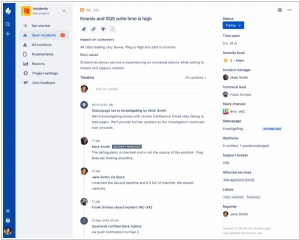
Atlassian has introduced a new edition of its flagship product, Jira, designed to enhance the efficiency and speed at which operations teams handle incidents. Jira Ops seamlessly integrates with various tools including OpsGenie, PagerDuty, xMatters, Statuspage, Slack, and others. While many teams already utilize these tools during service disruptions, Atlassian highlights the prevalent ad hoc approach employed by most companies in managing incidents. Jira Ops aims to serve as the cohesive element that ensures alignment and offers comprehensive visibility into ongoing incidents. With Jira Ops, when an incident occurs, users have a centralized location where they can access all relevant information. This includes details on who has been notified and alerted, the ability to notify additional individuals directly from the platform, and knowledge of the Slack channel dedicated to discussing the incident. Additionally, Atlassian has acquired OpsGenie for $295 million, further strengthening its incident management capabilities.
2016. JIRA gets Upwork integration
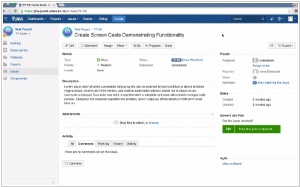
The project management service JIRA is introducing a new functionality that enables users to seamlessly convert JIRA tickets into job postings on the Upwork freelance marketplace. This integration allows JIRA users to simply click a button and access a pre-filled form to submit directly to Upwork's marketplace. This feature is particularly beneficial for small businesses that frequently face a backlog of feature requests and unresolved bug fixes. It is worth noting that this collaboration between Atlassian and Upwork is not the first time they have partnered in relation to JIRA. Upwork clients already have the ability to link their JIRA tickets to their Upwork account, enabling freelancers to track their time. Furthermore, clients can utilize Upwork's messaging feature to receive updates when a freelancer commits code to Bitbucket or updates a JIRA ticket, for instance.
2015. SaaS ITSM service Samanage raises $16M
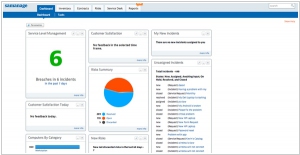
Samanage, the SaaS platform designed to assist customers in managing various internal assets, has recently disclosed securing $16 million in Series B investment. While the company initially focused on IT asset management, founder and CEO Doron Gordon emphasizes that the technology can be employed to manage assets across all departments within an organization, regardless of their relation to IT. Gordon envisions that after successfully organizing IT assets, the company can expand its reach to encompass HR, finance, facilities, and operations. This expansion brings Samanage into direct competition with established players like Zendesk, Freshdesk, and Salesforce.com.
2014. Atlassian launches JIRA and Confluence for large companies
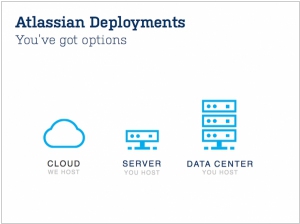
Atlassian has unveiled two new products designed specifically for large enterprises. In the upcoming week, Atlassian will release JIRA Data Center, a version of its project management software that supports running the service on multiple nodes. Additionally, later this summer, it will introduce Confluence Data Center, a collaboration service centered around wikis. With the Data Center versions, larger companies will enjoy improved support for scaling the services across multiple nodes, resulting in enhanced performance and scalability. Administrators will have the ability to route specific applications, teams, or geographies to designated nodes within a cluster, while additional nodes can be added in real time. The clustering technology and shared file systems are seamlessly integrated with industry-standard technologies, ensuring smooth operations.
2012. Jira 5 - bug-tracker goes social

Atlassian has launched the new version of its project management system Jira 5 and called it Social. We expected to see some sort of built-in social network where users could add bugs, vote for features, discuss updates. But none of these features appeared. Probably it's for the better, because bug - is an intimate thing and it shouldn't be publicly discussed. The new social features in Jira 5 are: the tool for sharing bugs/tasks with co-workers or groups, and the support for @names. If you mention @someone in the comments - he will receive the notification and will probably help in solving the task. In addition, the new version allows to link a bug to any external URL (website or web app) and adds a lot of integrations (including Salesforce, Zendesk, Confluence, Get Satisfaction). And you certainly want to know why there are so many Angry Birds in the video? ***

